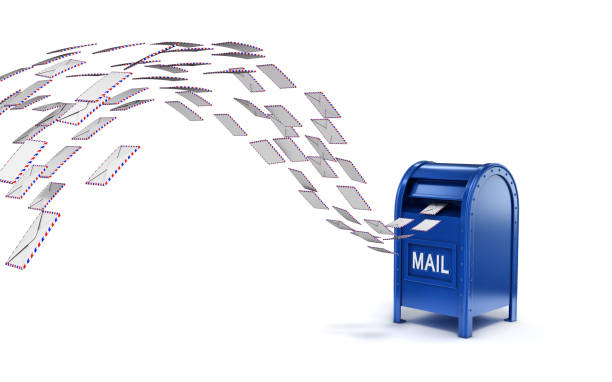
Mailing a letter across states in the U.S. is a common practice, whether for personal communication, legal documents, or business correspondence. In an era dominated by instant messaging and emails, physical mail may seem like a slower option. However, understanding the timelines involved can help you plan accordingly, ensuring that your letter reaches its destination promptly. In this blog, we’ll explore how long it typically takes to mail a letter to another state, factors that affect delivery times, and how modern tools like ZIP code finders and online mailing services can simplify the process.
Standard Delivery Times for Mailing a Letter
The United States Postal Service USPS is the go-to option for mailing letters, both locally and across state lines. USPS provides a range of services, each offering different delivery times based on the urgency of the letter.
1. USPS First-Class Mail:
For most personal letters and small documents, First-Class Mail is the standard option. It’s affordable, reliable, and used frequently by individuals and businesses alike. When mailing a letter to another state, First-Class Mail typically takes 1 to 5 business days to arrive. The time frame depends on various factors such as the distance between states, local postal operations, and mailing conditions. If you’re sending a letter from a metropolitan area like New York to a neighboring state, delivery may be quicker than mailing a letter from California to Maine.
2. USPS Priority Mail:
If you need faster service, Priority Mail is a great option. It generally delivers within 1 to 3 business days to any state across the U.S. This option is ideal for mailing important documents, time-sensitive items, or larger packages. However, it comes at a slightly higher cost compared to First-Class Mail.
3. USPS Priority Mail Express:
For the quickest delivery, Priority Mail Express guarantees delivery within 1 to 2 days. It’s the best choice for urgent deliveries and includes tracking and insurance. This service is more expensive than both First-Class and Priority Mail, but it ensures that your letter or package arrives as quickly as possible.
Factors Affecting Delivery Times
While USPS delivery services provide general timeframes for mailing letters between states, several variables can impact how quickly your letter is delivered:
1. Distance Between Sender and Recipient
The most obvious factor affecting delivery time is the distance between the two states. Mailing a letter from a coastal state like California to an eastern state like New York will likely take longer than mailing it to a nearby state like Nevada. Geographic distance plays a significant role in determining how long it will take the letter to travel through USPS processing facilities and reach its destination.
2. Location of Postal Facilities
Another factor is the location and efficiency of the postal facilities in the sending and receiving states. If either location is far from a central sorting facility, it may add time to the overall process. Large metropolitan areas tend to have more frequent and efficient mail processing compared to rural areas, where mail may take longer to be sorted and delivered.
3. Holidays and Weekends
USPS does not typically deliver on Sundays and federal holidays. Mailing your letter on a weekend or right before a holiday could delay delivery. Always keep in mind the USPS holiday schedule and try to send important letters in advance if your timing is critical.
4. Weather Conditions
Severe weather, such as snowstorms, hurricanes, or floods, can delay mail delivery. These delays are often unavoidable, as extreme conditions affect road transport, air travel, and the operation of postal facilities. While USPS strives to maintain regular service, natural disasters can lead to unexpected delays in delivery times.
5. Mail Class and Service Selection
As mentioned earlier, the delivery time will also depend on whether you choose First-Class Mail, Priority Mail, or Priority Mail Express. Higher service levels cost more but offer faster delivery times and additional benefits like tracking and insurance.
How to Track Your Letter’s Progress
USPS provides a tracking option for most of its mail services, except for standard First-Class letters. If you send a letter using Priority Mail or Priority Mail Express, you can use the tracking number provided to monitor the letter’s progress online. Tracking can give you peace of mind, especially when mailing important documents, and help you estimate when the letter will reach its destination.
Mailing Letters Online: A Modern Solution
With the advancements in technology, mailing a letter doesn’t always require a trip to the post office. You can now mail a letter online through services that allow you to create, print, and send physical letters electronically. These online platforms make it easier to send letters without leaving your home or office.
Benefits of Mailing Letters Online:
1. Convenience: Avoid trips to the post office. You can prepare your letter and submit it online in minutes.
2. Time-saving: Online mailing services handle everything from printing to postage, saving you time and effort.
3. Fast processing: Letters sent online can often be printed and mailed the same day, meaning your letter gets into the postal system more quickly.
4. Trackability: Many online services offer tracking options, so you can monitor when your letter is delivered.
Online mailing platforms are particularly useful for businesses that need to send multiple letters or documents, as they can automate bulk mailings and ensure timely deliveries. This feature is invaluable when mailing time-sensitive documents or marketing materials.
Using a ZIP Code Finder to Speed Up the Process
Accurate addressing is essential for timely mail delivery. Mistakes in the recipient’s address or missing ZIP codes can cause delays or even prevent the letter from reaching its destination. One easy way to avoid such errors is by using a ZIP code finder.
How a ZIP Code Finder Helps:
1. Ensures Accuracy: By using a ZIP code lookup tool, you can ensure the recipient’s address is correct, avoiding delays caused by inaccurate or incomplete information.
2. Saves Time: Instead of manually verifying an address, the ZIP code finder quickly provides the correct ZIP code for any location.
3. Increases Delivery Speed: A correct ZIP code ensures that your letter is sorted properly, helping it move through the postal system more efficiently.
When mailing a letter, especially across state lines, ensuring that you have the correct ZIP code is crucial. It helps USPS direct your letter to the appropriate sorting facility and ensures that it arrives at its destination as quickly as possible.
Tips for Mailing Letters Between States
Here are some additional tips to ensure your letter reaches its destination on time:
1. Double-check the Address: Ensure that the recipient’s address is complete and includes the correct ZIP code. Small errors in the address can lead to significant delays.
2. Consider Using Tracking: For important documents, choose a mailing option that includes tracking so you can monitor the progress of your letter.
3. Plan Ahead: If you’re mailing a letter that has a deadline, plan for potential delays by sending it well in advance.
4. Use Online Mailing Services: For even more convenience, consider using an online platform to send your letter electronically. This can speed up the process and eliminate the hassle of visiting a post office.
Conclusion
The time it takes to mail a letter to another state depends on several factors, including the mail class, distance, and location of the postal facilities. While USPS First-Class Mail typically delivers within 1 to 5 days, Priority and Priority Mail Express can offer faster delivery times for those who need urgent service. Modern tools like ZIP code finders and online mailing services streamline the process, ensuring accurate addresses and faster mail processing. Whether you’re sending personal letters or important business documents, planning and choosing the right service can help ensure your letter arrives on time.




